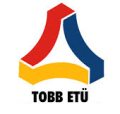Active Research Areas:
-
Guided Hair Removal with Laser
Laser hair removal is a popular nonsurgical aesthetic operation, where the aim is to remove hair permanently by damaging the hair follicle and shaft thermally.
However, laser affects the superficial skin layers in addition to hair follicles causing health risks.
Side effects of laser-assisted hair removal can be minimized by directing the laser beam only to the detected hair regions.
We propose a feature based hair region localization method by using machine learning techniques.
-
Automated Prostate Cancer Localization With Multispectral MRI
Prostate cancer is a leading cause of death among men, and a disease severely diminishing quality of life
with complications of sexual, urinary, and rectal dysfunction. In spite of the importance of prostate cancer, there is still no reliable,
clinically available, method of diagnostic imaging for prostate cancer. Multispectral MRI is a promising tool
that combines information from various types of MR imaging techniques. Our goal
is to to develop automated cancer localization methods based on the reliable ground truth that are obtained from histology and
multispectral MRI.
-
Automated Prostate Segmentation
We develop an automated unsupervised method for the segmentation of the prostate. This is useful in clinical diagnosis of prostate
related diseases as well as a preprocessing step for cancer segmentation.
- Image Fusion for Prostate Cancer Localization With Multispectral MRI
The objective of this project is to develop image fusion techniques for multispectral MRI. Unlike automated localization methods,
here the goal is to provide the radiologists a single image that contains most of the significant information of multispectral MR
images. This project involves a human reader study where we compare the tumor detection and localization
performances of the human readers with and without
the proposed image fusion approach.
Past Research Areas:
- Kinetic Parameter Imaging with Dynamic Positron Emission Tomography
Kinetic parameter estimation with dynamic PET is an important tool for quantification of
the physiological properties of the tissue of interest. The applications include, tumor studies,
drug delivery research, and neurology. The challenges of kinetic parameter imaging with dynamic PET that we
tackle are the need for the blood input function, and the local minima problems that cause algorithms to
converge to incorrect parameter values, and sometimes do not converge at all.
- Oxygen Tension Imaging of the Rat Retina
Abnormalities in retinal oxygenation are thought to play a significant role in the development of common eye diseases, such as diabetic retinopathy,
glaucoma, and age-related macular degeneration. However, our knowledge of oxygen's function in many retinal diseases is incomplete.
Therefore, accurate assessment of oxygen tension in the retinal vasculature is important to establish the role of oxygen in the development
of retinal disease and to aid in the detection of the onset or presence of retinal diseases. Our goal
is to develop advanced image reconstruction schemes to obtain more accurate oxygen maps.
- Source Modeling and Localization with Electroencephalography (EEG) and Magnetoencephalography (MEG)
EEG and MEG are the only techniques that measure the electrical activitiy in the brain directly. With a very high
temporal resolution, EEG and MEG are very commonly used for brain mapping, and the study of diseases such as epilepsy, alzheimer, and others.
Classical source modeling for EEG/MEG uses either focal sources, or a distributed sources with signal estimates at
each point in the brain. We develop parametric one- and two-dimensional sources that has the advantage of
the ability to model sources distributed on a curve or a surface, but does not have the disadvantage of high computation
burden as the classical distributed source estimation techqniues.
- Image Registration
Registration is a fundamental step in image processing
systems where there is a need to match two or more
images. Applications include motion detection, target recognition,
video processing, and medical imaging. Although a vast number
of publications have appeared on image registration, performance
analysis is usually performed visually, and little attention has
been given to statistical performance bounds. We tackle this problem by deriving
theoretical performance bounds for the image registration problem.
- Fractional Fourier Transform (FrFT) and Its Applications
Fractional Fourier Transform is a type of Linear Conanical Transform, which has an
extra free parameter when compared to ordinary Fourier Transform. This free parameter
corresponds to the projection of the time-frequency representation of the signal at a certain
angle which depends on the parameter value. FrFT has found a wide range of applications
in signal/image processing and optics, especially whenever there are time- or space- variant systems
or signals are involved. Click on the link to see several contributions to the area and
the applications we have developed.
|
